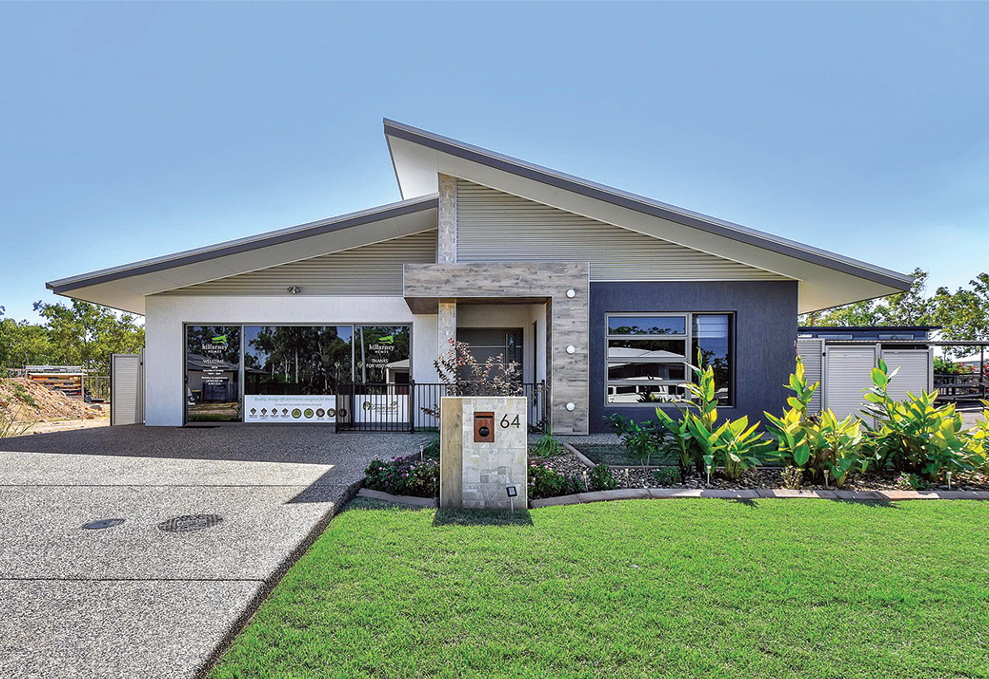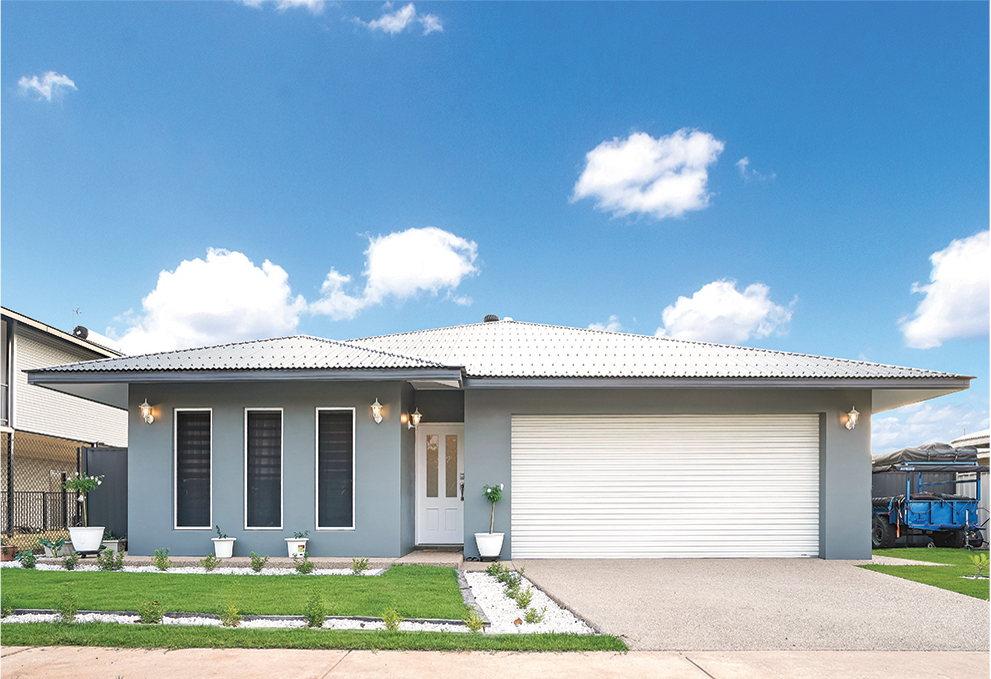FAQ's
1. How does the scheme work?
The Fidelity Fund was set up in 2013 for the residential building sector to protect consumers.
Under the scheme, builders apply for an annual level of cover. Their portfolio is then monitored, and builders may be asked at any time to produce their financials.
Builders, on behalf of their clients, also have to obtain a certificate of cover for every new house, units up to three storeys, renovations or an extension. This cost is passed on to the consumer, who is issued with a Fidelity Fund Certificate through their builder.
The scheme covers private residential work and work for the Defence Housing Association, not commercial or transportable buildings or NT Government contracts (which come under the Contractor Accreditation Limited or CAL).
The scheme also covers owner builders to ensure that if they sell their house, the next owner is covered for defects.
The Residential Building Cover is accessible only when a trigger event has occurred. In other words, the builder has died, disappeared, become insolvent or had their registration suspended or cancelled.
This means that in all instances where there is an allegation of defective or incomplete work by an owner and a trigger event has not occurred, the owner must apply to the Commissioner of Residential Building Disputes, not the Fidelity Fund NT. The Commissioner has the power to determine whether the building work is in fact defective or incomplete. If so, it can order that the builder rectify or complete the work.
FInd out more by contacting the Northern Territory Government’s Building Advisory Services.
2. What are the benefits of the scheme?
The scheme is not designed to cover everything, but it does provide certainty for consumers that their projects will be finished, and it provides for a more secure residential building sector. With the Fidelity Fund in place, owners may have benefitted from up to $200,00 towards completing their homes.
The cover provided by the Fidelity Fund NT indemnifies current owners for two things. The first element of the cover is that it can pay out on claims arising from non-completion of the building work, for example, where a trigger event occurs during construction. In that situation, there will almost certainly be costs for the owner to engage a new builder and the cover indemnifies the owner for those reasonable additional costs of engaging the new builder (within the cap of up to 20% of the contract price up to a maximum of $200,000).
The second element of the cover is that it will pay out on claims for defective work also only where a trigger event has occurred. For example, if defects become apparent during the period of the consumer guarantees, and a trigger event has occurred, the current owner may submit a claim. to the Fidelity Fund NT. The cap for this element of the cover is $200,000, less any amount that has already been paid for a non-completion event. This means that the total amount that could be claimed on is $200,000.
The benefits of reforms, which includes the Fidelity Fund, are:
- it helps the industry through checks on high-risk builders who give the industry a bad name.
- it protects consumers from the minority of builders who deliberately, through poor management or bad luck are unable to complete the work
- it helps the consumer by ensuring builders have the financial capacity and experience to meet their commitments – the Fidelity Fund works with builders to ensure they don’t over commit and get into financial strife.
- under changes to the Building Act mean there are defined progress payments so the builder can claim only for work that has been completed
- the homeowner now has a 12-month non-structural guarantee (e.g., taps, cupboards, doors) on the home and a six-year structural guarantee (roof and wall structures, concrete slabs)
- there is also a dispute mechanism which is administered by Consumer Affairs if there is a dispute between the owner and builder
- it allows consumers to claim up to 20% of the contract price capped at $200,000 if their builder dies, goes bankrupt, disappears or leaves a legacy of poor work.
- deposits are limited to 5% of the contract cost
- most importantly, it provides a number of mechanisms to prevent problems or pick them up early, saving cost and heartache for people who have often invested their life savings in a new home.
The best result for Fidelity Fund NT and consumer confidence would be that no builders go bust and no consumers are left in the lurch.
3. What if 20% of the contract cost isn’t enough?
If consumers don’t make progress payments until work is completed, this would normally be sufficient to cover any losses. What is important is that consumers get competitive quotes, so they are not over-charged and that they don’t make progress payments until work is satisfactorily completed.
4. I’m a builder and I’m worried I’ll be held responsible for what my tradespeople do
It is true that builders are being held responsible for work by tradespeople. However, if things are properly installed and fit for purpose, this shouldn’t be an issue. If things break down, they may be covered by manufacturers’ warranties or home insurance.
5. Why is this a scheme of ‘last resort’ (i.e., you can’t claim until builders go broke, die or disappear) rather than ‘first resort’ (i.e., when consumers become concerned about a job)?
While schemes of ‘first resort’ offer more protection, they are also more expensive and more prone to nuisance claims. A ‘last resort’ scheme is a safety net, combined with proactive measures to protect consumers and a mediation role by Consumer Affairs offers good protection.
The most important thing is a good relationship between builders and consumers so they can work together to solve any issues.
6. What happens when a builder declares bankruptcy?
At that point, the builder has broken their contract with the owner and the owner would make contact with the Fidelity Fund NT. Each circumstance is different, but owners can access the rights covered in their certificate.
7. Does that mean tradespeople are covered?
No, the owner is the beneficiary of the certificate.
8. How many builders have been refused registration?
None. The only limitation on any builder has been the amount of work they have been certified to take on. In fact, some of the people who are complaining to the media have never applied for registration. Our records show that 95% of builders have been covered for the level applied for.
9. Where does the money go?
The money collected goes into a trust account to build up capital to ensure claims can be paid out. The fund also has to meet operating and fixed costs, such as administration, the cost of actuaries and auditors and the financial checks and registration process and ongoing industry oversight.
10. How much profit does the Fidelity Fund NT make?
None, it’s a not-for-profit scheme. The scheme is run by trustees and all money goes either on costs or into the trust fund. Master Builders NT provides administration and secretarial services and has sub-contracted to an actuary, compliance auditor and financial auditor, who are required under the Building Act.
11. Have there been any pay outs?
Yes, but a minimal number considering how many builds have been covered. The Fidelity Fund NT aims to minimise the need for pay outs by focussing on preventative measures, such as random inspections by our compliance auditor. This is a key difference between a Fidelity Fund and an insurance product.
12. Does the scheme cover fraud and criminal behaviour?
No insurance protects you against criminal behaviour, but the Fidelity Fund and the Building Act do contain several checks and balances that limit the risk, such as builders having to be registered, random inspections by a compliance auditor and limits on progress payments. A builder behaving fraudulently, such as using another builder’s licence or encouraging owners to become owner-builders is more likely to come to notice. Consumers also have someone to turn to if they are worried about a builder’s behaviour. Nonetheless, these measures it may not cover you from over-quoting and some other fraudulent behaviour.
It pays to get more than one quote and seek independent advice if you are unsure.
It is also worth noting that under the Building Act and the Building Regulations:-
A builder must not request or receive from the contracting owner:
(a) a payment for carrying out prescribed building work except as a progress payment after completion of the stage of work to which the progress payment relates, as specified in or under the residential building contract for the work; or
(b) more than the percentage of the total contracted price that is specified in or under the residential building contract.
Also, a builder must not demand or receive payment (whether as a deposit or otherwise) under a residential building contract unless they have provided you with a contract and a copy of a Fidelity Certificate.
13. At what point can I make a claim?
Anyone concerned about their builder can also ring the Fidelity Fund to seek advice and the Fidelity Fund compliance auditor may be able to look into the matter.
14. How do I submit a claim?
Contact the Fidelity Fund NT on 8922 9680 or email fidelityfundclaims@mbant.com.au
15. Can other schemes compete in the Territory?
Anyone can compete, however the size of the market would make it difficult to do this viably, given the extent of fixed costs. The Fidelity Fund NT is underwritten by the Northern Territory Government to ensure it can make any payouts required.
16. Why should builders have to disclose their financials?
Providing financials for the fund is no different to providing information for some large tenders or accreditation with the Contractor Accreditation Limited (CAL). It’s to ensure companies aren’t over-extending themselves, building up unsustainable levels of debt or taking on new work when they are experiencing financial difficulties, and putting unwitting clients at risk by robbing Peter to pay Paul.
Builders need to know that all the information they provide is kept strictly confidential.
17. Is it true that the scheme is creating a barrier to new builders getting into the industry?
No, it’s just ensuring they have the experience and finances to meet their commitments to clients. As they finish one house, they can get a certificate to do another. They can apply at any time to have their level of cover increased.
18. Do builders have to provide a personal guarantee?
Rarely have builders has been asked to provide a personal guarantee. However, a sole trader may have to provide information on assets and liabilities, which could include personal assets to demonstrate they are solvent.
19. Is there Fidelity Fund cover for unit developments?
The Fidelity Fund issues certificates for residential unit developments, but only for buildings up to three stories.
21. How is a Fidelity Fund claim made for unit developments?
The process for making a claim against the Fidelity Fund is the same as for a stand-alone residential house, except for the area covered by the Body Corporate, which is common property. For a common property claim, the Body Corporate must organise a combined claim for each unit titleholder in the development. Any successful claims are then dispersed between all unit owners.





